
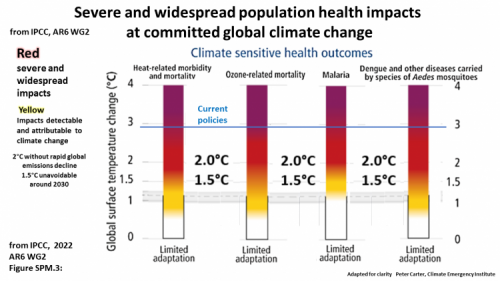
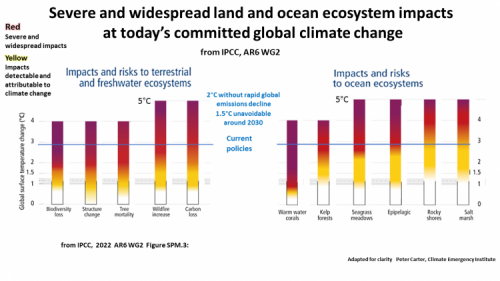
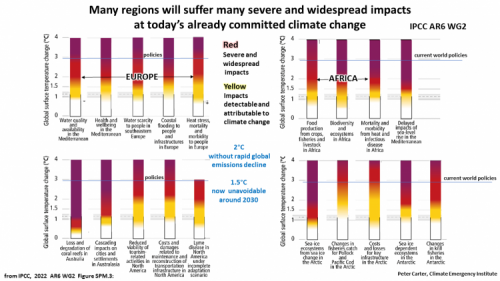
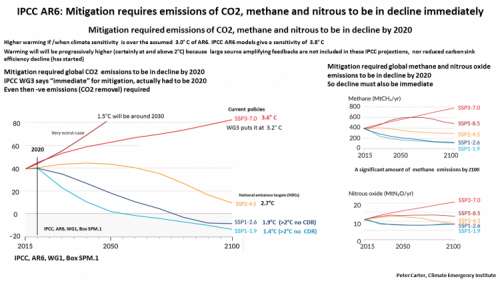
Global disastrous fixed 1.5°C 2030 or soon after and 2°C by 2050
“In all mitigation scenarios, crossing the 1.5°C threshold lies
in the early 2030s” 2°C is crossed by 2050 (IPCC AR6 WG1 Ch.4-555)
“In all mitigation scenarios, crossing the 1.5°C threshold lies
in the early 2030s” 2°C is crossed by 2050 (IPCC AR6 WG1 Ch.4-555)
Unprecedented atmospheric CO2 rate of increase
Highest in 14 million years. Rate of increase 56 million year high
The rate at which CO2 has increased in the atmosphere during 1900–2019 is at least 10 times faster than at any other time during the last 800,000 years, and 4–5 times faster than during the last 56 million years (IPCC AR6, WG1, 5-676)
Highest in 14 million years. Rate of increase 56 million year high
The rate at which CO2 has increased in the atmosphere during 1900–2019 is at least 10 times faster than at any other time during the last 800,000 years, and 4–5 times faster than during the last 56 million years (IPCC AR6, WG1, 5-676)
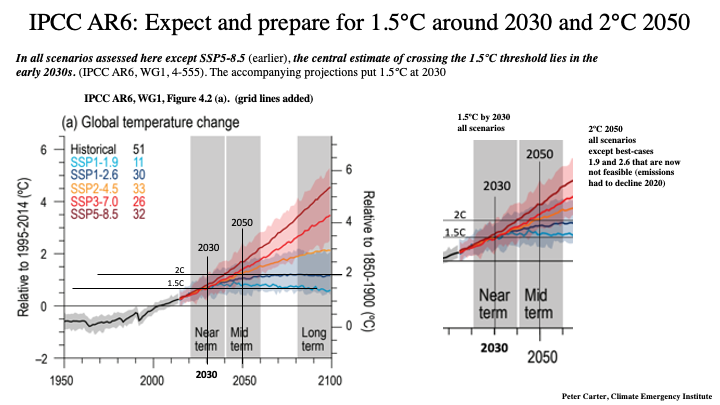
IPCC 6th Assessment (AR6)
IPCC Reasons for Concern Risks/impacts
The 'burning embers' IPCC formulation of risks/impacts.
The global warming at which impacts occur in AR6 is much lower than the 2014 IPCC AR5, as research has found impacts occur at lower degrees.
The red zone is observed severe and widespread impacts
The 'burning embers' IPCC formulation of risks/impacts.
The global warming at which impacts occur in AR6 is much lower than the 2014 IPCC AR5, as research has found impacts occur at lower degrees.
The red zone is observed severe and widespread impacts
On Current policies Warming will be 3.2°C this century (IPCC AR6) Higher after 2100
For 1.5°C & 2°C emissions had to be in decline by 2020, now (immediate) (AR6)
IPCC temperature increases are only to 2100.
Warming continues 100s of years after 2100
Warming continues 100s of years after 2100
2018 IPCC 1.5°C Report showed 1.5°C on impacts is globally disastrous and 2°C globally catastrophic- obvious now from unprecedented extreme events all regions.
IPCC AR6 emissions projections
At 2°C (or less) multiple large global warming amplifying feedbacks, and tipping points are triggered
The IPCC AR6 told us all extreme weather events are
increasing,due to human emissions, and will continue increasing
with every increment of global warming
increasing,due to human emissions, and will continue increasing
with every increment of global warming
IPCC AR6 Global temperature increase projections

Climate Emergency Institute

click on image for full size clear images
IPCC AR6 emissions (Gt CO2/year) scenario projections and corresponding global warming to 2100
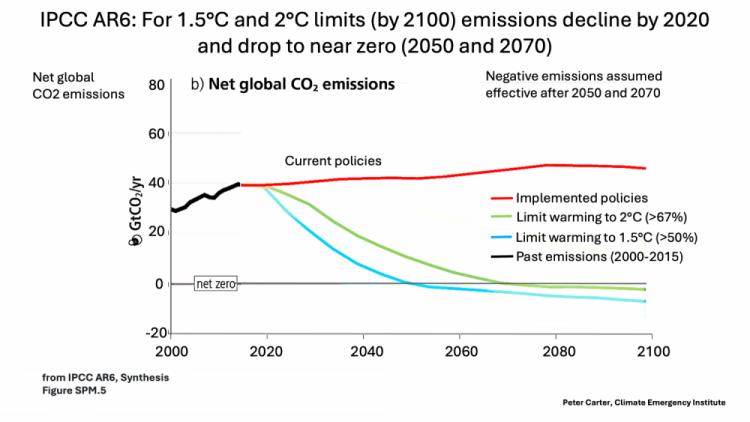
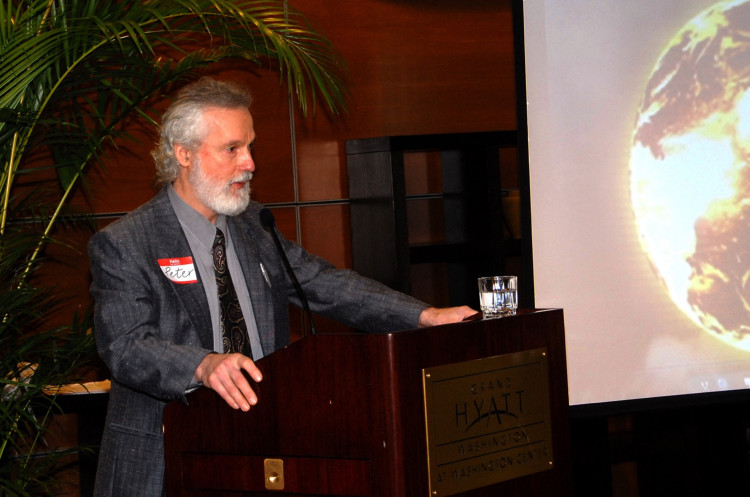
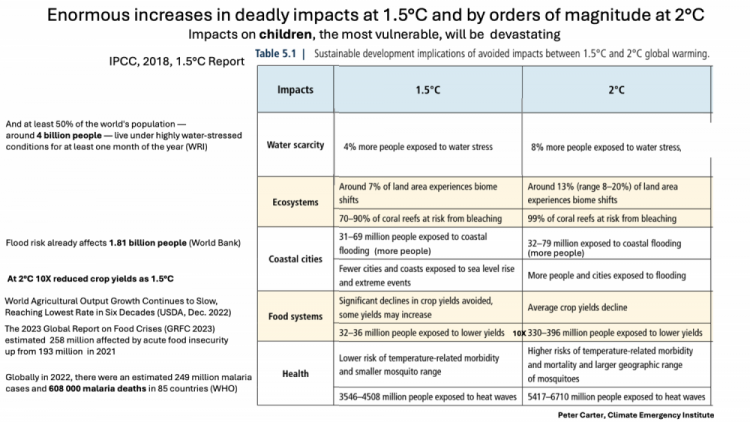
IPCC 6th Assessment
Unnoticed, 2023 and 2024 temperature increases were on very worst-case scenario, SSP5-8.5